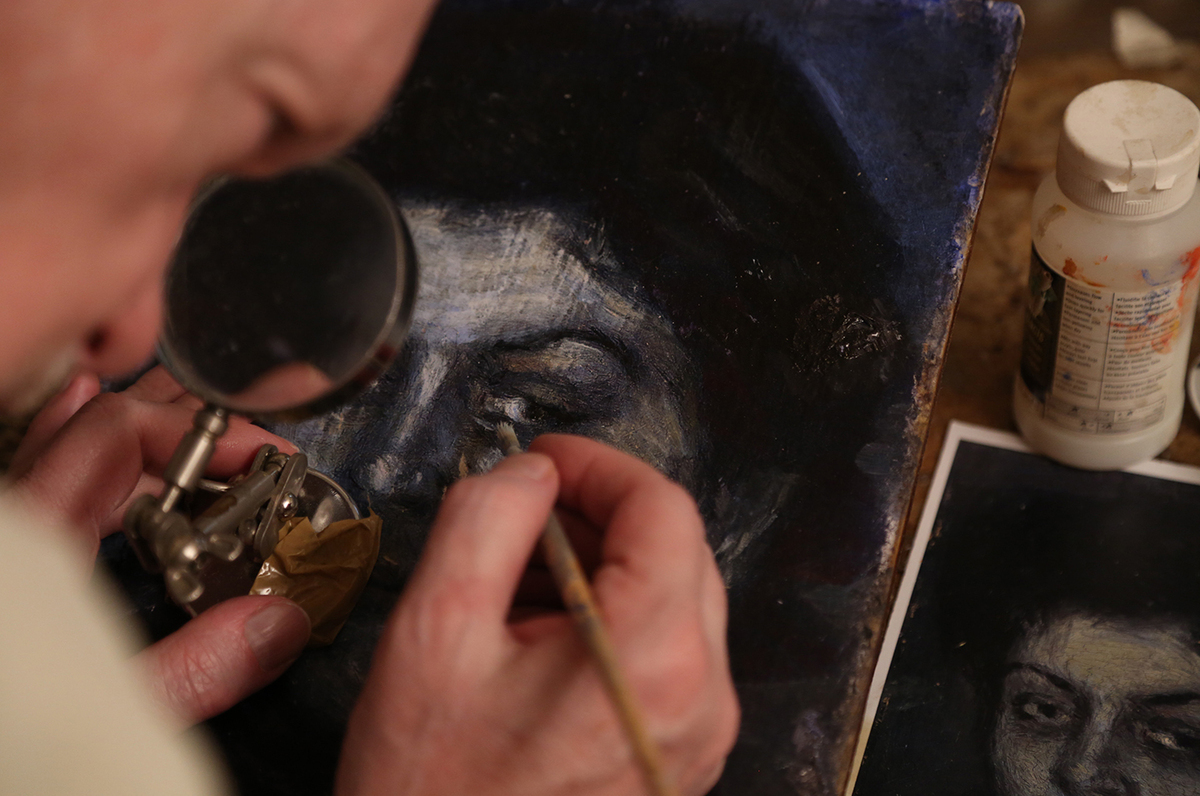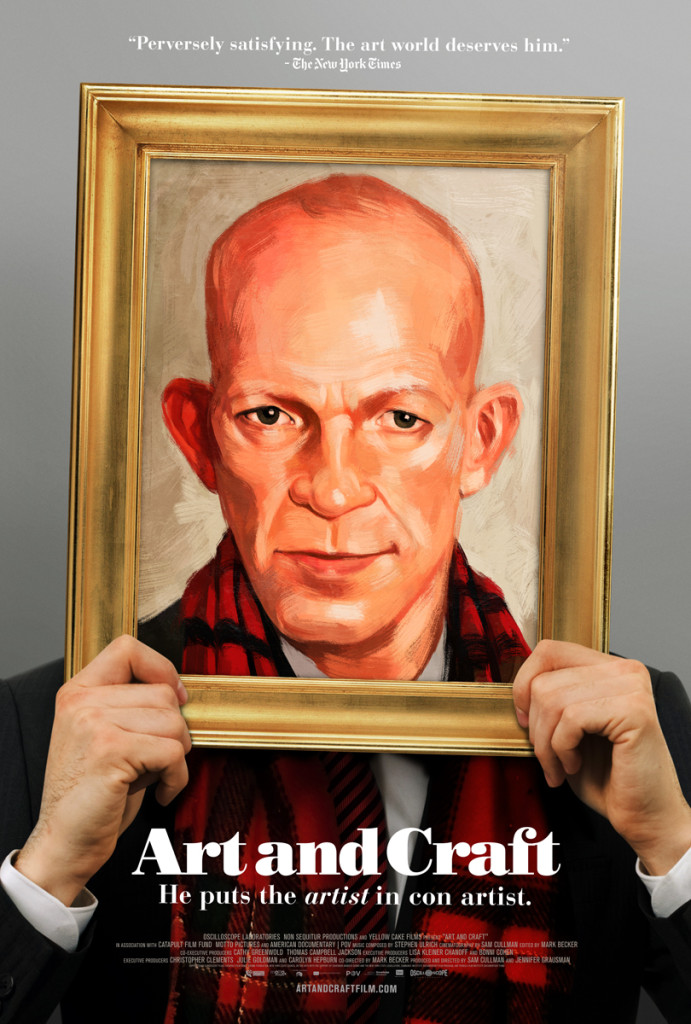
Landis at work on a “Picasso,” in Art and Craft, via NPR.
A few weeks back, I somewhat belatedly caught the 2014 documentary Art and Craft, about a curious and remarkable art forger named Mark Landis. If you don’t know the story, Landis is a reclusive and eccentric older gentleman who lives in Mississippi, who for years created skillful reproductions of works by well-known artists in a variety of styles. These were evidently convincing enough that scores of museums accepted the fakes into their permanent collections. Most amusingly, he would sometimes execute a single painting repeatedly, placing copies of the exact same work in multiple museums. (NPR has useful piece on Art & Craft, and Landis, here.)And after watching the film, I’d be quite happy to own one of his forgeries. But maybe not for the reason you’d think.
Everybody loves a good tale of well-faked art, for at least two reasons. One is the simple tendency to marvel at a talented forger’s raw skill: the ability to duplicate what had previously seemed singular, to mimic a range of seemingly distinct visual voices. It’s impressive. The other reason is that the spectacle of the fooled expert (especially the fooled art expert) is always fun, and reassuring in a way that I assume some German word captures precisely.
The interesting thing about Landis is the degree to which he seems to have been motivated by the latter idea. He never sold his fakes, or otherwise used his forging skills to make money; he donated the works to that slew of big museums. This involved personal visits and a variety of fibs and outright performances to explain how he happened to own this or that painting by a master. He used aliases, spun yarns, even posed as a priest.
Even more intriguing: On several occasions in the film, he notes in passing the various shortcuts and workarounds he used in his image-making process. Despite having obvious hand skills, he sometimes just started with a plain old photocopy, if that was easier. He routinely substituted blatantly inauthentic materials—cheap frames and markers from chains like Hobby Lobby, a colored pencil subbing for chalk, and so on. “They can’t tell,” he mumbles slyly as he describes his process in the film.
Setting aside the extent to which this implies Landis was motived by the supreme pleasure of the con, these cheats are what made me most curious about the actual work. Each painting sure looks convincing in the film (even if the shortcuts made the fakes easily detectable through authentication tools museums should have used). What subtleties might emerge in person?
Landis repeatedly shrugs off his efforts as an “arts and crafts” hobby. But clearly his skill extends into the realm of achieving quality aesthetics on the cheap, as he hand-ages those mass-market frames and devises to techniques to make photocopies look painterly. In short, something about his modest-sounding “arts and crafts” mantra suggests a more complex form of craftiness.
Curious about what’s happened with Landis since the film, my wife and I each poked around online. To keep him productively engaged with a project that doesn’t involve fooling museums, interested parties have helped him set up an online storefront of sorts: you can now commission him to copy a photograph, and he appears to do this fairly well.
What you can’t do, however, is commission him to copy, say, a Picasso. Pity. That’s what I’d want to see—and the more the results match the fake’s art-like quality with craft-shop materials, the better.
Of course, keeping Landis away from such projects is understandable, given his apparently compulsive attraction to unauthorized forgery. But musing about this, we wondered about a different solution. Suppose well-known living artists—the likes of, say, David Hockney—worked out explicit deals with Landis. Suppose he could sell official, authorized forgeries. All above-board, revenue shared, nobody hoodwinked. The resulting work would cease to be a fake and instead become a Hockney-Landis. Its crafty nature would be a distinct attraction, not an underminer of the real McCoy.
Surely I’m not the only person who would be tempted to buy such a thing (depending, of course, on the price point). Although come to think of it, maybe the idea I’m floating here has already been done by some other artist/forger combination. Well, so what if it has? The details could be tweaked as necessary, until the scheme felt a little more … original.


